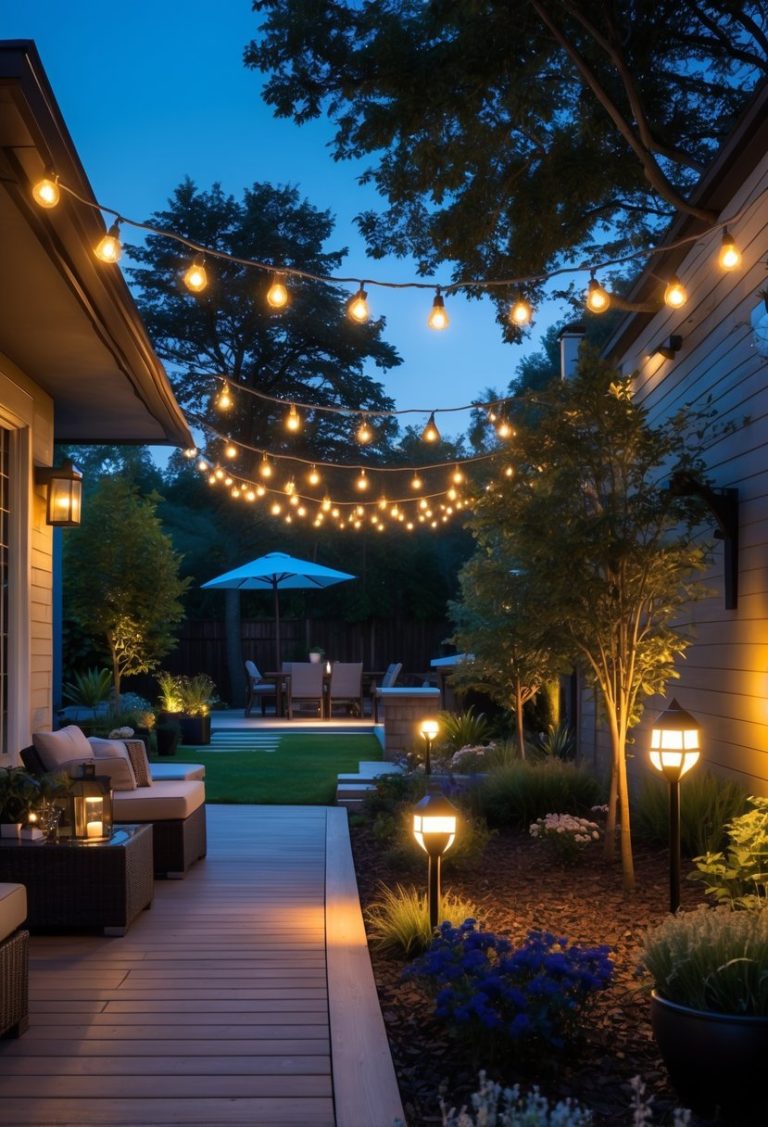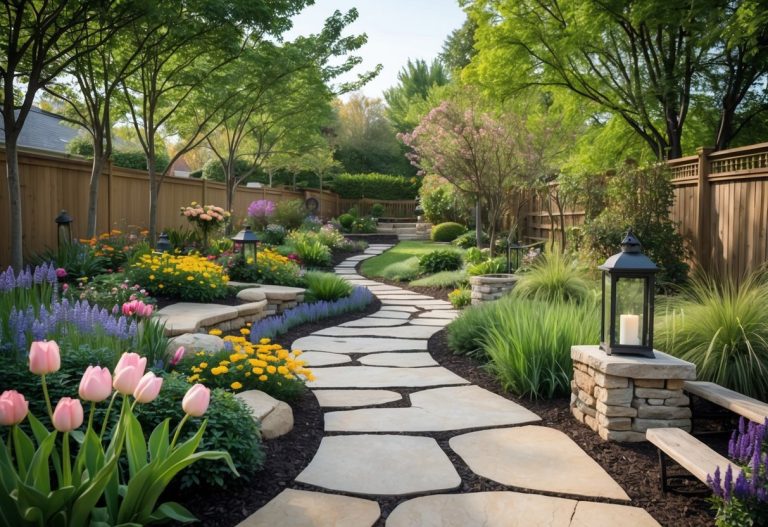Car Parking Design Home Garden: Modern Solutions for Stylish Spaces
A well-designed car parking area in your home garden can add both convenience and style to your property. It’s not just about finding a spot for your car, but about creating a space that fits your lifestyle and complements your home’s appearance. By planning carefully, you can protect your vehicle while enhancing your garden’s look.
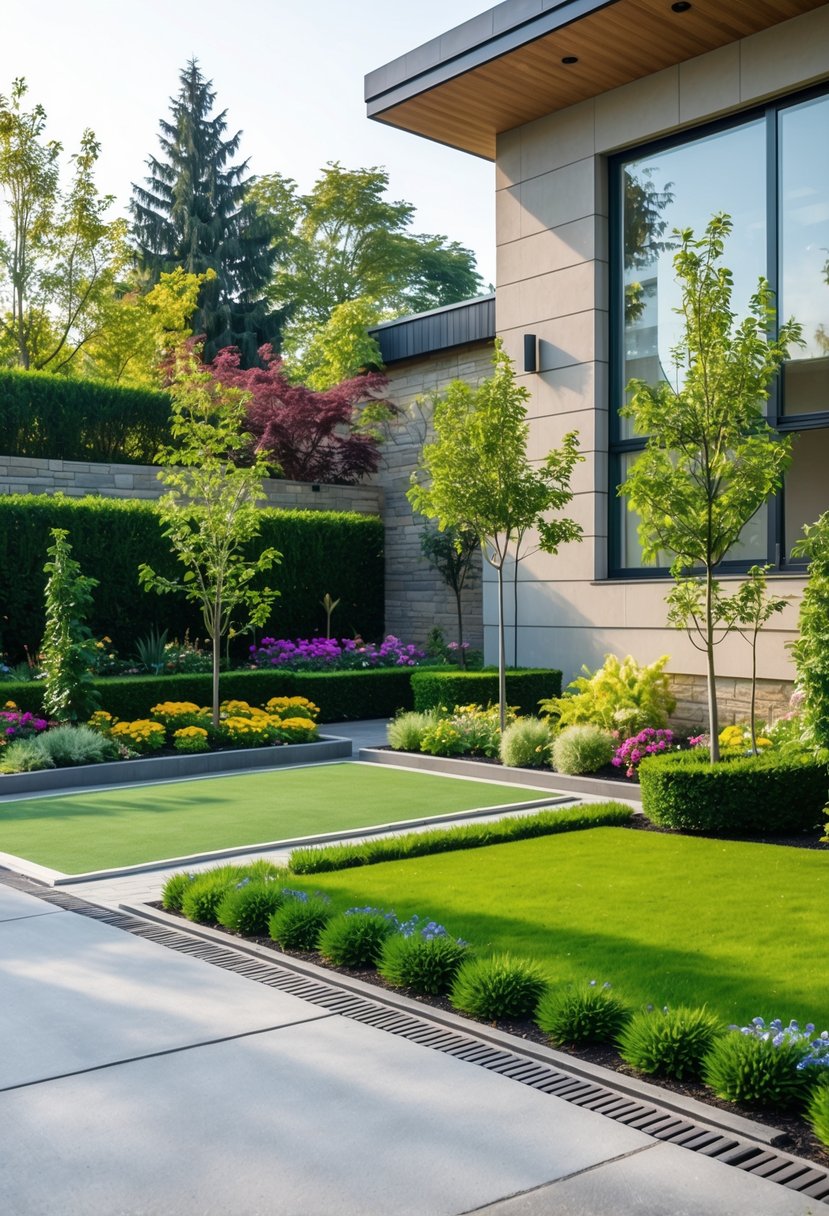
Smart use of space and thoughtful design lets you create a parking area that is safe, functional, and visually appealing, whether you have a large garden or a limited driveway. You can blend natural elements with practical features to keep your outdoor space neat and welcoming.
There are many ways to design your home garden parking, from simple carports to more advanced ideas like solar panel-covered areas or stackable parking lifts. Choosing a design that matches your home’s style and meets your daily needs will make parking easier and preserve the beauty of your garden.
Key Takeways
- A good parking design improves both safety and appearance.
- Efficient space use is key when you have limited outdoor area.
- Parking designs can be matched to fit your home’s style and needs.
Fundamentals of Car Parking Design for Home Gardens
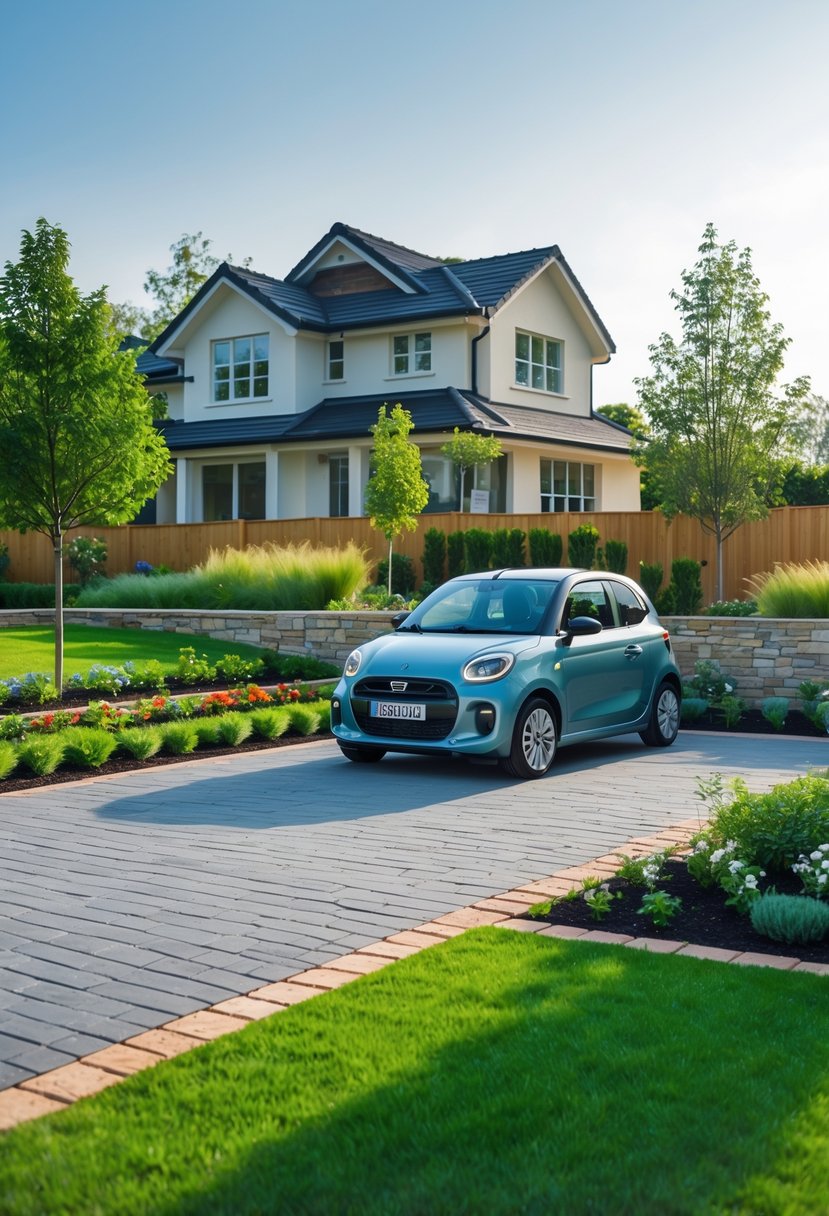
Designing car parking in your home garden requires careful thought about space, materials, and types. You need to balance vehicle protection with garden aesthetics. Planning your layout well ensures smooth access and durability. Choosing the right materials keeps your parking area safe and long-lasting.
Types of Home Garden Car Parking Solutions
You can select from several parking options depending on your garden size and style. A carport offers shelter while keeping an open feel with airflow. It’s simple and protects your car from sun and rain without fully enclosing the space.
If you want minimal impact on your garden, consider strip parking, where you pave only two narrow strips for the car wheels. This saves space and preserves greenery between the strips.
For more security and storage, a freestanding garage works well. It is separate from the house and can double as storage for tools or bicycles.
If your garden is small or irregularly shaped, angled parking fits more cars into tight spaces and improves access. Depending on your needs, choose a solution that balances protection, garden beauty, and space efficiency.
Key Principles of Space Planning
Planning your parking layout means making sure there’s enough room for cars to enter, park, and exit safely. Leave at least 2.4 to 3 meters wide for single car spaces and enough length, usually about 5 meters, for comfortable parking.
Place the parking spot close to your home entrance for easy access. Keep the driveway smooth and avoid sharp turns to reduce stress while parking.
Think about traffic flow in your garden. If you have more than one vehicle, plan for tandem parking or angled spots to maximize use without blocking cars. Make sure there is proper lighting and clear markings to improve visibility and safety.
Essential Materials and Durability Considerations
Your choice of materials affects both durability and garden appearance. Use concrete or asphalt for solid, long-lasting surfaces that withstand weather and weight well.
If you want a greener look, consider grass pavers or permeable paving. These allow water drainage and blend with lawn areas but still support cars.
Make sure materials are non-slip and easy to maintain. Strong materials ensure your parking area stays safe and looks good over time. Proper drainage is also key to avoiding water damage or pooling around your parking space.
Modern Car Parking Design Ideas
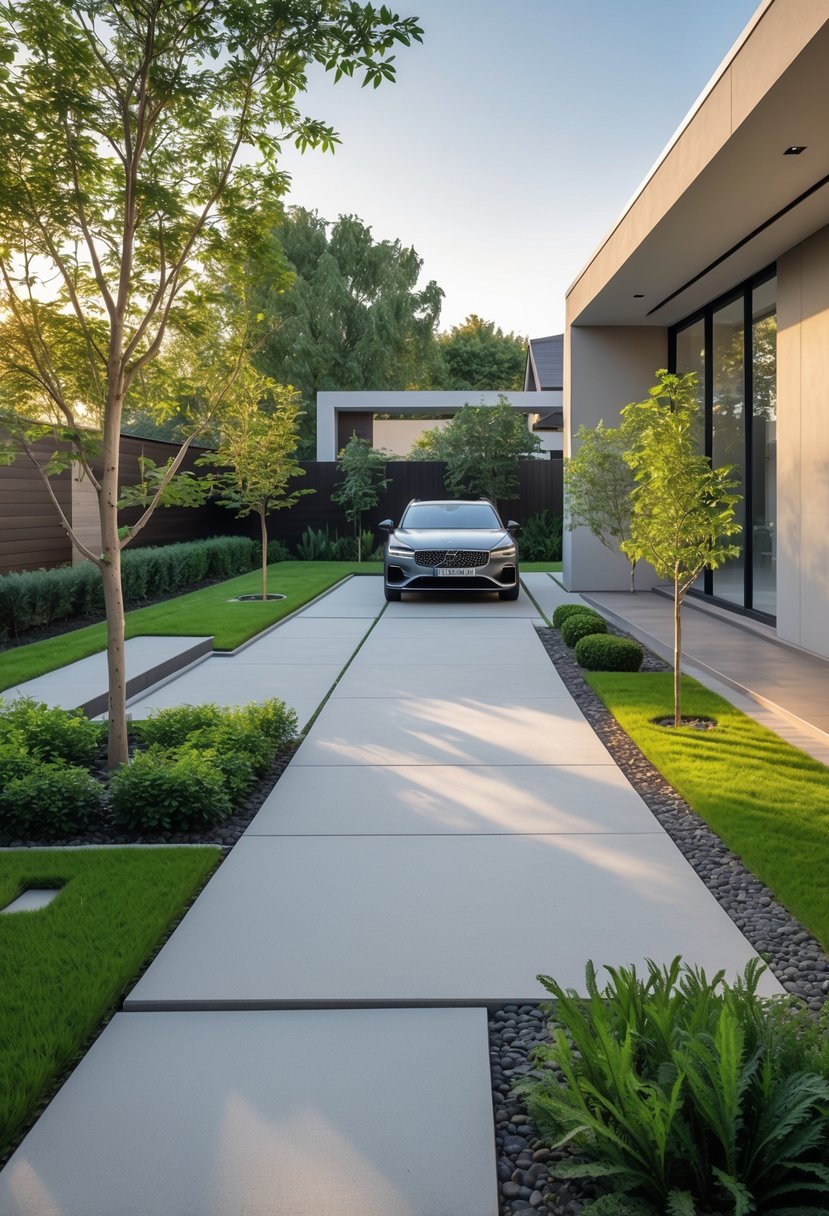
When designing a car parking area in your home garden, focus on balancing style, practicality, and technology. You want a space that protects your vehicle, complements your garden, and adds value to your property.
Integrating Greenery and Landscaping
Adding plants and natural elements around your parking area softens its look and blends it with your garden. Use grass pavers or permeable tiles to create a green surface that lets grass grow through while supporting your car’s weight. This helps reduce runoff and keeps the area eco-friendly.
Surround your parking spot with low shrubs, flower beds, or climbing plants on fences and walls. These plants can add privacy and improve air quality. Landscape features like stone pathways or small trees near the parking space can also create a luxury feel that fits a modern home.
Contemporary Layouts and Aesthetics
Modern parking designs favor geometric shapes and clean lines that match your home’s style. You can choose an open carport with a sleek roof made of glass or metal, or a covered garage that uses vertical wooden panels for a warm, natural look.
Consider angled or tandem parking layouts if space is tight. Angled parking improves access and flow, while tandem setups allow you to park more cars in a narrow space. Use neutral or pastel colors for hard surfaces and walls to keep the design understated but elegant.
Smart Features and Security Enhancements
Incorporate technology to boost convenience and safety around your car parking. Automated garage doors let you open and close your space remotely using a smartphone app. Security cameras and motion-sensor lights provide constant monitoring without cluttering the area.
You can also add smart sensors to detect whether your car is parked correctly or to show available spots if you have multiple vehicles. Solar panels on a carport roof supply energy for these gadgets, adding to the eco-friendly and luxurious aspects of your design.
Designing for Limited Spaces
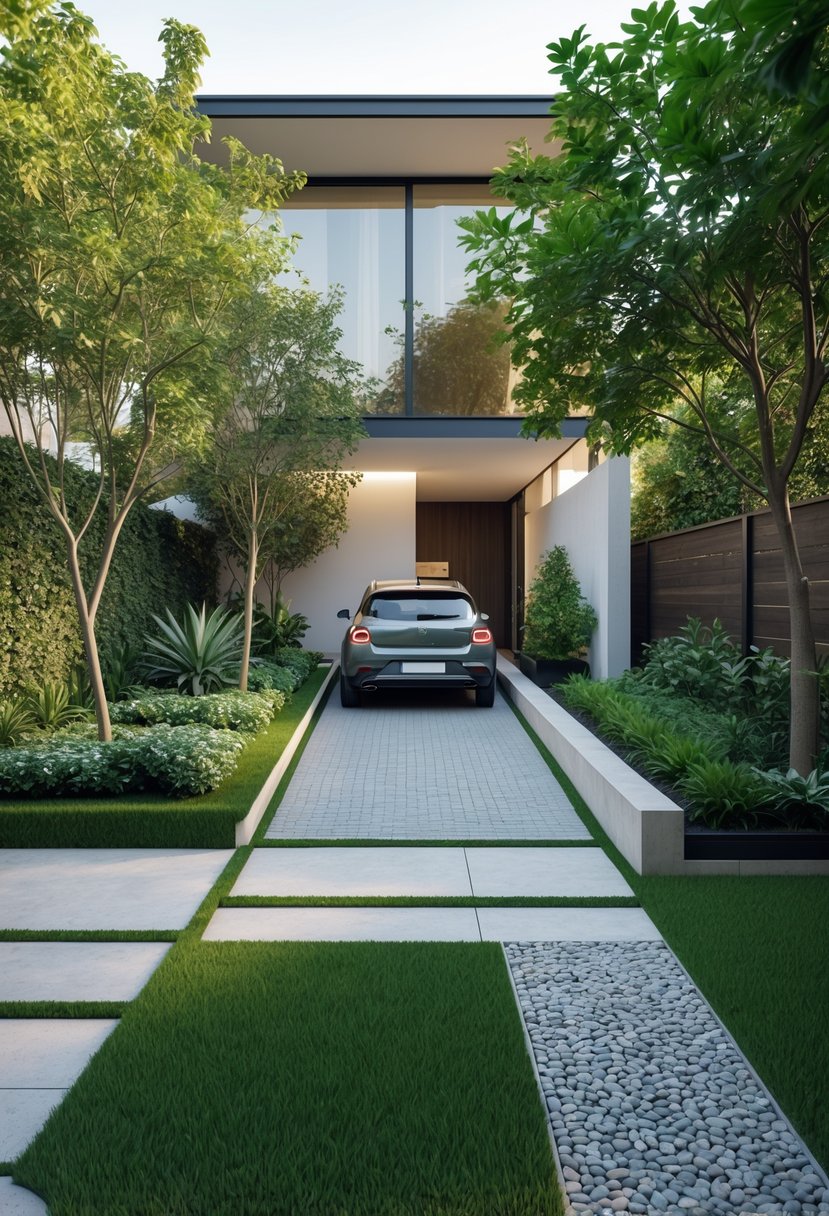
When space in your garden is limited, careful planning helps you fit parking without ruining the look or flow of your outdoor area. You need to balance parking needs with garden features, making sure both serve their purpose well.
Optimizing Small Gardens for Parking
Use your garden’s existing layout to create space for parking without cutting out all greenery. Consider leaving only narrow strips of paving for your car’s tires instead of a full concrete slab. This approach lets grass or plants grow between the strips, keeping the garden feeling fresh.
Choose plants that work well with cars nearby. Low-maintenance, hardy shrubs and ground covers can prevent soil damage and improve the garden’s look. Make sure pathways to and from the car are clear and safe, avoiding sharp turns or tight spots.
Compact and Multi-Functional Designs
A small garden can serve more than just parking if you design it smartly. Look for ways to combine parking with outdoor living or storage. For example, a compact carport with a flat roof can double as a patio or seating space.
You can also include small garden beds around paved areas or use modular units that can be moved or folded away. Add vertical elements like trellises with climbing plants to save floor space but still add greenery.
Space-Saving Techniques and Tips
Stackable parking lifts let you park two cars in the space of one by using vertical space. This works well if you have high ceilings in a garage or a tall driveway entrance.
Tandem parking, where one car parks in front of the other, suits long but narrow driveways. This needs coordination but uses space efficiently.
Incorporate angled parking if your garden has an irregular shape. Angled spots allow easier parking and more vehicles when space is tight.
Use clear markings and good lighting to prevent accidents and protect both vehicles and garden plants.
Tailoring Car Parking Designs to Your Home Style
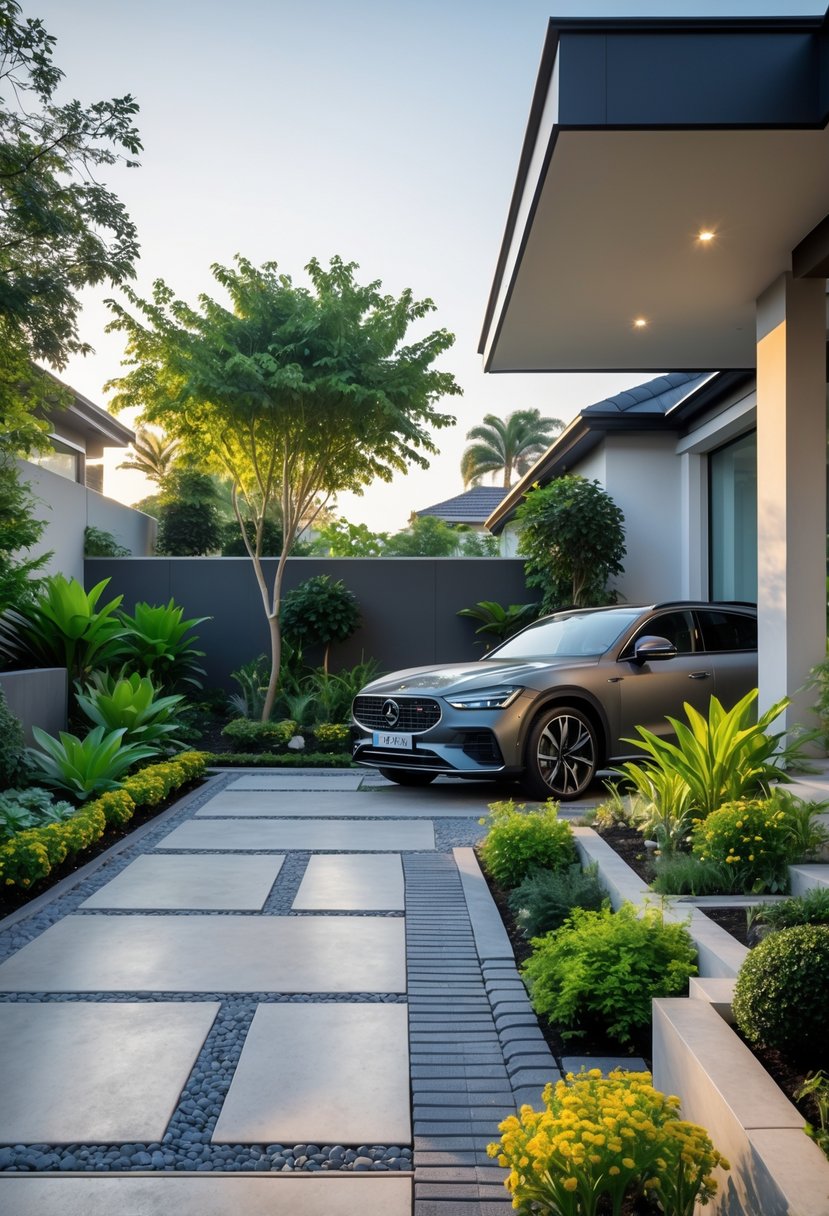
Your car parking area should match your home’s look while staying practical. You can design parking spaces that blend with your building’s style and add personal touches. This makes your outdoor space feel more connected and attractive.
Blending Parking with Architectural Features
To create a unified look, extend elements from your home to the parking area. Use the same materials like bricks, stone, or wood in your driveway or carport. Matching colors and textures help your parking feel like part of the house.
Shape and layout matter. If your home has clean, straight lines, choose a rectangular driveway. If it’s more traditional or cozy, consider curves or natural shapes. You can also add architectural details, such as pergolas or rooflines, that echo those on your house.
Lighting and landscaping around the parking space should reflect your home’s style. For example, classic lanterns suit a vintage house, while modern LED lights fit a contemporary design. The goal is a smooth transition from home to parking.
Personalization and Custom Finishes
You can make your parking space stand out with details that show your style. Customize the surface with patterned pavers, stamped concrete, or gravel combined with ground plants. These options add texture and color without losing function.
Consider adding accessories like built-in storage, stylish gates, or electric vehicle charging stations. These add value and usefulness. Paint or stain garage doors to complement your home’s facade rather than letting them look plain or dull.
Small touches matter too. Decorative borders, planters, or artistic screens can create interest. Personal finishes create a space that is practical but also feels like part of your home’s personality.

